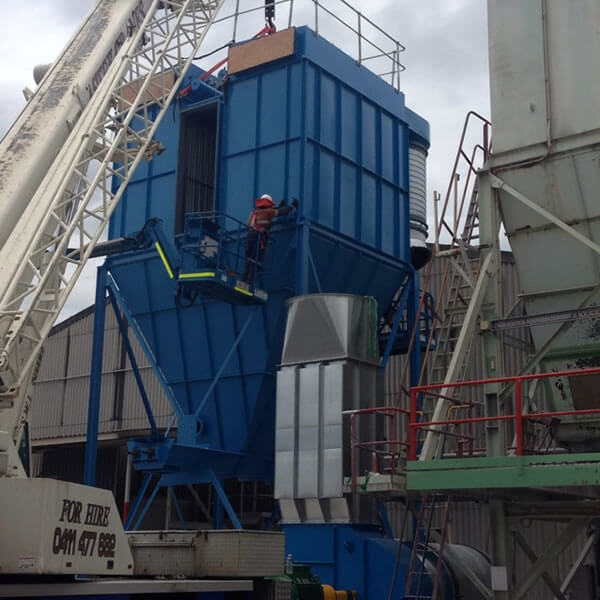Imagine a bustling factory, machines humming, employees working hard – a symphony of productivity, right? Now, picture walking into that same workspace, only to be met with a cloud of dust that leaves you coughing and squinting. Not a great image, is it? That's where industrial dust extraction equipment enters the scene. This powerful machinery is the unsung hero of industrial spaces, silently working to keep your air clean and your lungs safe. But how do you best care for these essential systems to ensure they work efficiently for years to come?
Throughout the following sections, we’ll scratch beneath the surface to explore best practices for maintaining your industrial dust extraction equipment. A good quality dust extraction & dust collector is an essential investment for your business, which is why it is imperative to choose the right one for your needs the first time around.
Join us on this exploratory journey where we delve into why regular maintenance is essential, how to conduct routine checks, when replacements are required, the pros and cons of different maintenance procedures and much more!
The Underlying Importance of Regular Maintenance
Regular maintenance for your extraction system isn’t just a good idea—it’s industrial hygiene law! Dust extraction systems collect airborne particles that could otherwise harm employees' respiratory health or even start a fire if left unchecked. It's not just about keeping your equipment functioning; it's about ensuring the safety of your employees and facilities.
Aside from health implications, regularly serviced equipment operates more efficiently - preventing expensive energy waste. Moreover, overlooking maintenance can lead to system failure, resulting in costly repair or replacement. Therefore, a preventative approach is wiser and more economical in the long run.
From the perspective of compliance, doing regular checks and maintenance aligns with workplace safety regulations. A well-maintained extraction system sits well with inspectors and lowers the risk of legal ramifications for non-compliance.
The Art of Conducting Routine Checks
Routine checks are the bread and butter of maintenance routines. Start by thoroughly reviewing the on-board indicators and alert systems—if they're flagging any abnormalities, it likely indicates a maintenance requirement.
When inspecting, pay special attention to the ductwork, filters, and airlock seals, and look out for any dust emissions, vibrations, or unusual noises. Additionally, ensure that the airflow reading is within the recommended range as specified by your equipment manufacturer.
Aside from physical checks, keep your employee feedback loop open. Often, those working closest to the machinery can identify minor issues before they turn into significant problems.
Timing Is Everything: When to Replace Components
Certain components of dust extraction equipment, like filters, cannot be effectively maintained forever and will need replacement eventually. Knowing when to do so is vital.
Filters past their prime not only compromise air quality but also put undue strain on your machinery, shortening its overall lifespan. While regular inspections can help identify any immediate issues, having a predetermined replacement schedule based on the manufacturer's guidelines is the best practice.
Similarly, replace worn-out parts like belts and vents immediately to prevent a domino effect of damage to other components.
Weighing the Options: Pros and Cons of Maintenance Methods
Each maintenance method comes with its pros and cons. In-house maintenance, for instance, offers greater control and immediacy, but it requires your staff to have specific expertise; and there's the added task of staying current with the ever-evolving standards.
Contracting professional service, meanwhile, ensures your equipment is cared for by experts up to date with the latest maintenance practices and safety standards. However, you'd have to adjust for the additional budget and coordinate well with their scheduling.
Balancing the pros and cons and choosing the method that best suits your operational style, capabilities, and budget is critical.
Conclusion: A Clean Workspace is a Productive Workspace
When it boils down to dust extraction equipment maintenance, the old adage "an ounce of prevention is worth a pound of cure" holds perfectly true. Addressing the maintenance needs of your dust extraction equipment routinely prevents expensive system mishaps, aids in regulatory compliance, enhances worker safety, and maintains overall productivity.
Employing the right maintenance methods, listening to manufacturer advice for component replacements, conducting routine checks intelligently, and prioritizing the safety of your crew, are all significant steps in preserving the efficacy of your dust extraction system.
In essence, maintaining your industrial dust extraction equipment isn’t just about clean air—it’s about paving the way for a cleaner, safer, and more efficient industrial workspace. So don the coveralls, pick up the tools, and get set to make your workspace dust-free and safe!








0 Comments